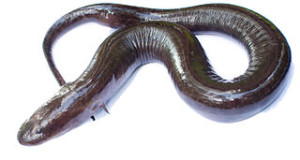Newts have long been among the most popular of all amphibian pets, and with good reason. Unlike most others, they are bold, active by day and readily accept prepared foods. Many are easy to breed in captivity and quite long-lived…a California Newt (Taricha torosa) in my collection reached 20 years of age. Today we’ll look at natural history and husbandry, and in part 2 I’ll cover individual species such as Eastern Red-Spotted, Fire-Bellied and California Newts.
Newt or Salamander?
The terms Newt and Salamander are used interchangeably, with Newt usually being applied to semi-aquatic animals within the family Salamandridae. The 79+ species in this family dwell in the United States, Europe, Asia, and Africa, a continent known for its paucity of salamanders.
Natural History
Newt skin is often rough and without a significant mucous covering. Males of many species develop bright colors and showy crests during the breeding season, another characteristic that endears them to herptoculturists. All deposit their eggs in water. Newts generally spend about half of the year in water, but some exhibit a unique three-stage lifestyle – aquatic larvae, terrestrial sub-adults (or Efts) and fully-aquatic adults.
Newts produce virulent skin toxins such as Tarichatoxin. These toxins can irritate eyes and mucus membranes, and may be fatal if swallowed. Always wash well after handling Newts, and do not allow children or pets to have access to them.
The Newt Aquarium
The most popularly-kept Newts hail from quiet waters, and are not strong swimmers. Outflow from their tank’s filter should be adjusted so that strong currents are not created. Most are comfortable at temperatures ranging from 55-75 F. Heaters are not needed, and natural fluctuations in room temperature may stimulate breeding activity.
Newts are best kept in well-planted aquariums. Their bright colors, highlighted against dense underwater foliage, makes for a spectacular display. Protected by skin toxins, Newts are quite bold and will not hide in such tanks but rather will spend hours foraging among the leaves and interacting with tank-mates.
Floating plants (i.e. water hyacinth) serve well as resting areas…Turtle Docks and cork bark should be provided for this purpose as well.
Diet
Reptomin Select-A-Food can form the basis of the diet…I’ve used the original Reptomin Food Sticks for many years with great results. This should be regularly supplemented with frozen and freeze dried invertebrate-based foods and live blackworms, earthworms, small crickets and other invertebrates.
A few Guppies will keep your Newts supplied with fry to eat, but will not out-compete them for dry foods (as will many other tropical fishes). I’ve recently begun using Canned Freshwater Shrimp as well. Both are difficult to obtain in live form, and provide important dietary variety.
Newt Companions
Armored Catfishes (Corydoras spp.) of most species and Weather Loaches do well in unheated aquariums and get along fine with Newts, as will temperate zone snails. Aggressive and surface-feeding fishes should be avoided.
With careful planting and perching, you can also keep small treefrogs (i.e. Gray, Green and Pacific Treefrogs) and Fire-Bellied Toads with most Newts.
Further Reading
Please see the book I’ve written, Newts and Salamanders, and the article Breeding the Crested Newt for more information on these most interesting animals.
A video of a beautifully planted Fire-Bellied Newt aquarium is posted here.
 That Reptile Blog – Reptile, Amphibian and Exotic Pet Care and Information
That Reptile Blog – Reptile, Amphibian and Exotic Pet Care and Information


